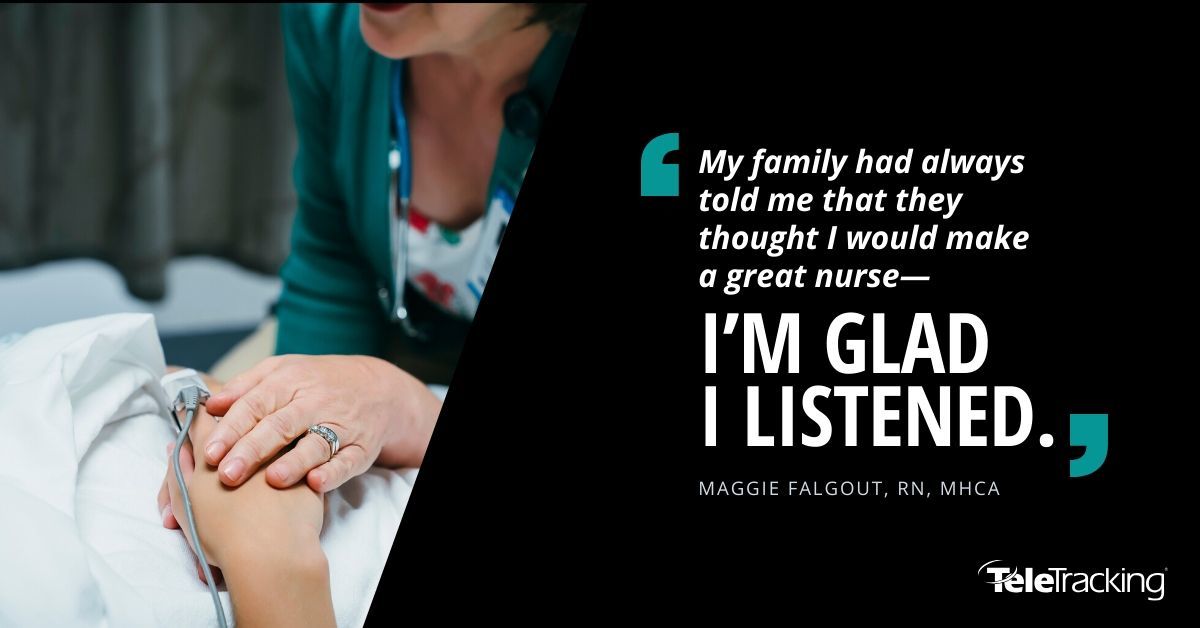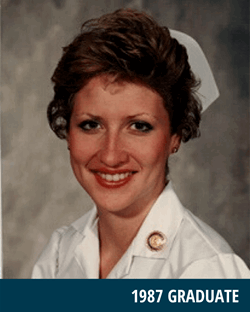Maggie Falgout, Manager, Business Development—A Year Long Celebration of the Amazing Accomplishments of Nurses
We started this blog series in January as a way to recognize the nurses that we have the honor of working with every day―and to be a part of the World Health Organization’s designation of 2020 as the “Year of the Nurse and Midwife.” We always knew that nurses around the globe deliver kind, compassionate care to patients in their times of greatest need—they hold the hand of an elderly patient; dry the tears of a frightened child; and comfort grieving family members. With the COVID-19 pandemic, nurses and all healthcare professionals are on the frontlines―continuing to serve, continuing to deliver care and continuing to be there for their communities during the greatest public health crisis in a century. Our sincerest thanks to the nurses who are working hard—under very difficult conditions—to ensure that no one should ever have to wait for the care they need.
This month, we’re pleased to feature Maggie Falgout, RN, MHCA, Manager, Business Development at TeleTracking. Maggie has worked in a wide range of nursing disciplines, including obstetrics, the operating room, as part of the medical/surgical team, as well as with hospice and chemical-dependent patients.

1. Why did you decide to become a nurse?
When I started college, I thought I wanted to be a teacher, but quickly realized that wasn’t the right career for me. My family had always told me that they thought I would make a great nurse—I’m glad I listened.
2. What are the biggest differences you’ve seen in the profession since you started your career?
The integration of IT applications to facilitate smooth transitions across the care continuum—which leads to better patient care. We used to get information on new patients and transfers by fax or hand-delivered…now it’s all captured electronically. Also, a shift to outpatient surgery for procedures that used to command a very long inpatient stay.
3. What is the biggest challenge(s) facing nurses today?
Burnout is definitely an issue due to the shortage of trained nurses―there are not enough nurses to staff appropriately, which results in higher nurse to patient ratios. And of course, right now, nurses are dealing with an incredible surge of patients, with the COVID-19 pandemic…which will lead to more burnout.
4. What do you think can be done to solve the nursing shortage?
We need to do a better job of communicating to both college students―and people thinking about a career change―the different things you can do with a nursing degree. I am a walking billboard for that! We also need to recognize the amazing contributions of nurses and reward them with higher pay and benefits packages.
5. Share a patient story that has impacted you personally.
There are so many, it’s almost impossible to pick. The hospice patients that I worked with though really moved me—both watching them grow and change before their deaths and helping them find comfort and peace. I also worked as a labor and delivery nurse and births never became commonplace for me. I always viewed them as a miracle. I have seen both sides of the “circle of life” and they are very much the same―a major change of life for the patient, where you get very involved with the family.
6. The World Health Organization has designated 2020 the International Year of the Nurse and the Midwife. Why is this type of recognition so important?
Nurses care for patients 24/7 and are always there to help. Nurses evaluate patient needs, determine what changes need to be made and ask the physicians for help in writing orders, etc. to deliver the best care. They are a critical part of the healthcare team—they help the other members excel in their roles and together this leads to better patient outcomes. Also, with doctors’ time also being stretched, nurses are playing much larger roles.
7. How does TeleTracking help nurses and other health professionals deliver a better patient experience?
TeleTracking makes it possible to take nursing functions that used to require a phone call, or online input, and automate them―saving both time and headaches. The technology also pushes notifications, allowing nurses to better plan their days and nights knowing what is coming their way.
For example, a nurse waiting for a patient to come from the emergency department is auto notified when the patient is on their way, allowing him or her to get ready for the patient. The nurse who is sending the patient from the emergency department clicks “ready to move” and a transporter is notified about the need for transport. This level of automation saves time and makes it possible for the nurse to do what they are trained to do—deliver compassionate care at the bedside.
8. How are TeleTracking’s health system command centers helping improve access across the care continuum?
It gives a health system visibility and transparency across their enterprise—making it possible for them to load balance patients between their tertiary and community facilities. The result is patients receiving the care they need, when they need it, in the right place, the first time. This is especially critical now given the isolation procedures that must be followed with COVID-19 patients. When I hear the news talk about “surge” and “creating capacity”, I know that we at TeleTracking are doing incredible work for the communities that we are lucky enough to serve.
More about this blog post
About the Expert
 Maggie Falgout, RN, MHCA
Maggie Falgout, RN, MHCA
Manager, Business development
Maggie currently holds the title of Manager, Business Development at TeleTracking. Maggie has worked in a wide range of nursing disciplines, including obstetrics, the operating room, as part of the medical/surgical team, as well as with hospice and chemical-dependent patients.
We're glad you're enjoying our resources! Please tell us more about you to access our full library.
This will allow us to personalize your experience on TeleTracking.com. Of course, we will never sell your information and you can opt-out at any time. Need help now? Contact a Patient Flow expert.
Leaving the website
You're about to leave this website, to one of our affiliates or another information source.